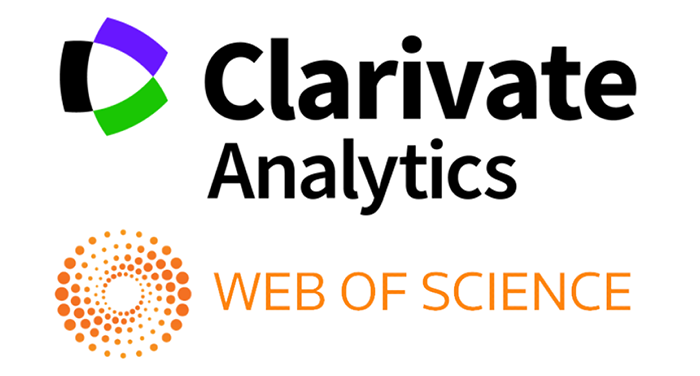IJTIMOIY TARMOQLARGA QARAMLIK NAMOYON BOʻLISHINING IJTIMOIY-PSIXOLOGIK OMILLARI
"Maqola"
Ushbu maqola ijtimoiy tarmoqlarga qaramlik namoyon boʻlishining ijtimoiy-psixologik omillarini tadqiq etishga bagʼishlangan. Oʻsmirlar va kattalar oʻrtasidagi qaramlikning asosiy jihatlari, qaramlikning namoyon boʻlishidagi gender farqlar, shuningdek, ijtimoiy tarmoqlarning psixologik salomatlikka, xususan, depressiya va xavotir buzilishlarining rivojlanishiga taʼsiri yoritilgan.
References
Andreassen, C. S., Pallesen, S., & Griffiths, M. D. (2017). The relationship between addictive use of social media, narcissism, and selfesteem: Findings from a large national survey. Addictive Behaviors, 64, 287-293. https://doi.org/10.1016/j.addbeh.2016.03.006.
Carr, N. (2010). The Shallows: What the Internet is Doing to Our Brains. New York: W.W. Norton & Company.
Casale, S., Fioravanti, G., & Rugai, L. (2016). Grandiose and vulnerable narcissists: Who is at higher risk for social networking addiction? Cyberpsychology, Behavior, and Social Networking, 19(8), 510-515. https://doi.org/10.1089/cyber.2016.0189.
Fardouly, J., Diedrichs, P. C., Vartanian, L. R., & Halliwell, E. (2015). Social comparisons on social media: The impact of Facebook on young womenʼs body image concerns and mood. Body Image, 13, 38-45. https://doi.org/10.1016/j.bodyim.2014.12.002.
Hampton, K. N. (2016). Persistent and pervasive community: New communication technologies and the future of community. American Behavioral Scientist, 60(1), 101-124. https://doi.org/10.1177/0002764215601714.
Kross, E., Verduyn, P., Demiralp, E., Park, J., Lee, D. S., Lin, N., … & Ybarra, O. (2013). Facebook use predicts declines in subjective wellbeing in young adults. PLOS One, 8(8), e69841. https://doi.org/10.1371/journal.pone.0069841.
Lemola, S., Perkinson-Gloor, N., Brand, S., Dewald-Kaufmann, J. F., & Grob, A. (2015). Adolescentsʼ electronic media use at night, sleep disturbance, and depressive symptoms in the smartphone age. Journal of Youth and Adolescence, 44(2), 405-418. https://doi.org/10.1007/s10964-014-0176-x.
Lenhart, A., Purcell, K., Smith, A., & Zickuhr, K. (2010). Social Media & Mobile Internet Use among Teens and Young Adults. Millennials. https://www.sbhihelp.org/files/social-media-young-adults.pdf.
Levenson, J. C., Shensa, A., Sidani, J. E., Colditz, J. B., & Primack, B. A. (2017). Social Media Use Before Bed and Sleep Disturbance Among Young Adults in the United States: A Nationally Representative Study. Sleep, 40(9), zsx113. https://doi.org/10.1093/sleep/zsx113. 10. McAndrew, F. T., & Jeong, H. S. (2012). Who does what on Facebook? Age, sex, and relationship status as predictors of Facebook use. Computers in Human Behavior, 28(6), 2359-2365. https://doi.org/10.1016/j.chb.2012.07.007.
Nesi, J., & Prinstein, M. J. (2015). Using social media for social comparison and feedback-seeking: Gender and popularity moderate associations with depressive symptoms. Journal of Abnormal Child Psychology, 43(8), 1427-1438. https://doi.org/10.1007/s10802-0150020-0.
Rosen, L. D., Carrier, L. M., & Cheever, N. A. (2013). Facebook and texting made me do it: Media-induced task-switching while studying. Computers in Human Behavior, 29(3), 948-958. https://doi.org/10.1016/j.chb.2012.12.001.
Turel, O., & Bechara, A. (2016). Social networking site use while driving: ADHD and the mediating roles of stress, self-esteem and craving. Frontiers in Psychology, 7, 455. https://doi.org/10.3389/fpsyg.2016.00455.
Twenge, J. M., Martin, G. N., & Spitzberg, B. H. (2018). Trends in U.S. adolescentsʼ media use, 1976-2016: The rise of digital media, the decline of TV, and the (near) demise of print. Psychology of Popular Media Culture, 7(3), 201-213. https://doi.org/10.1037/ppm0000203. 15. Vogel, E. A., Rose, J. P., Roberts, L. R., & Eckles, K. (2014). Social comparison, social media, and self-esteem. Psychology of Popular Media Culture, 3(4), 206-222. https://doi.org/10.1037/ppm0000047.
Woods, H. C., & Scott, H. (2016). #Sleepyteens: Social media use in adolescence is associated with poor sleep quality, anxiety, depression and low self-esteem. Journal of Adolescence, 51, 41-49. https://doi.org/10.1016/j.adolescence.2016.05.008.
Young, K.S. (1996). Internet Addiction: The Emergence of a New Clinical Disorder. Cyberpsychology Behav. Soc. Netw., 1, 237-244. https://doi.org/10.1089/cpb.1998.1.237.
Suler, J.R. (1999). To Get What You Need: Healthy and Pathological Internet Use, February 1999 Cyberpsychology & behavior: the impact of the Internet, multimedia and virtual reality on behavior and society 2(5):385-93 2(5):385-93 DOI:10.1089/cpb.1999.2.385.
Davis R.A. A cognitive-behavioral model of pathological Internet use, Computers in Human Behavior, Volume 17, Issue 2, 2001, P. 187195, ISSN 0747-5632, https://doi.org/10.1016/S0747-5632(00)00041-8.
Copyright (c) 2024 O‘zMU xabarlari

This work is licensed under a Creative Commons Attribution-NonCommercial-ShareAlike 4.0 International License.


.jpg)

.png)







